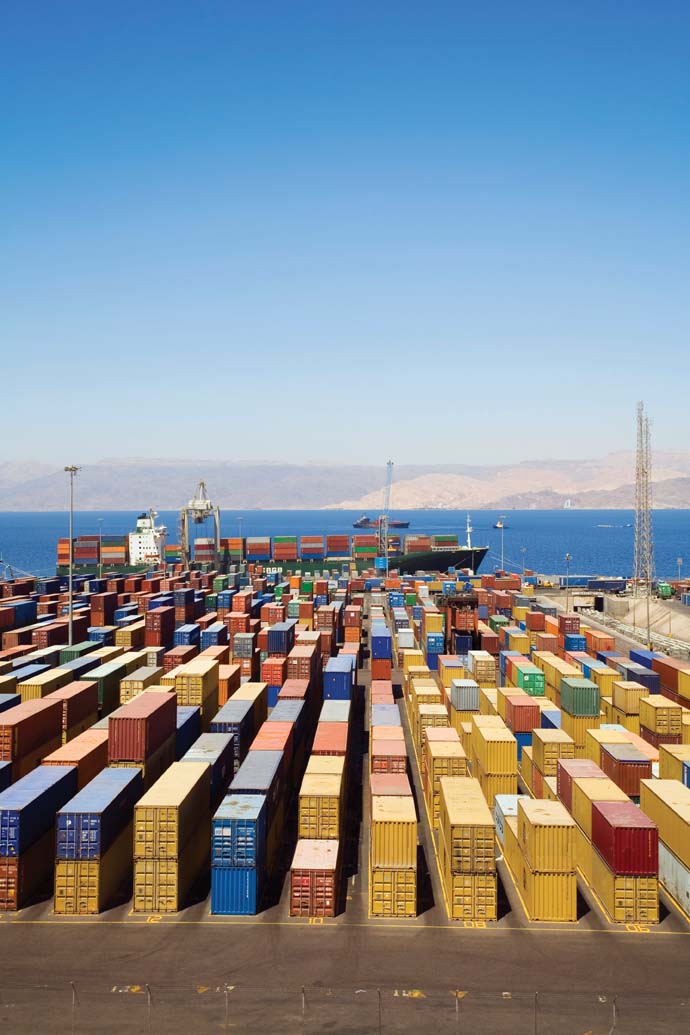
The Modern Day Trojan Horse
Kevin Lalama and Katharyn Nicolle
The U.S. is a leader in global nonproliferation efforts, from preventing new nuclear states to securing nuclear materials and technology. However, preventing nuclear terror requires efforts on the domestic front, as well. U.S. ports present a potential vulnerability; securing these ports requires improving our capacity to detect and secure nuclear materials that could arrive in shipping containers that appear harmless.
Nuclear challenges have changed over the past twenty years, but they have not disappeared. The likelihood of nuclear conflict between the Cold War superpowers has decreased, but the threat of nuclear terrorism is very real.
The International Atomic Energy Agency’s Illicit Trafficking Database has documented 615 incidents of loss or theft of nuclear or other radiological materials since 1993, including 16 cases involving highly enriched uranium. Terrorist organizations like Aum Shinrikyo and Lashkar-e-Taiba are known to be interested in acquiring a nuclear device, and Al Qaeda has been pursuing a nuclear weapon for over 15 years.
The players have changed, and the means of delivering a nuclear weapon have changed too. As ASP Consensus member Graham Allison, notes, “A nuclear weapon is more likely to arrive in a shipping container than on a missile.”
Shipping containers are relatively simple and inexpensive, in other words, “The Poor Man’s ICBM.” A 2006 RAND Corporation Study projected the results of a single 10-kiloton nuclear device detonated from within a shipping container at the Port of Long Beach, California. In a matter of seconds, 60,000 lives lost, 600,000 homes destroyed, the port’s infrastructure decimated, and a trillion dollar economic crisis.
Container security is a serious concern, but addressing it raises many questions.
The post-9/11 Container Security Initiative (CSI) prioritizes potential threats through an intelligence and analysis-based system. These containers or threats are then “quickly” pre-screened with detection technology in foreign ports. However, due to logistical and jurisdiction issues, not every potentially dangerous container can be scanned with x-ray and radiation detection technology.
The Department of Homeland Security (DHS) claims 99 percent of inbound containers were scanned for radiation in 2011, but the monitors lack the ability to detect nuclear devices. In fact, “fewer than half a percent” were scanned under the current system. Stephen Flynn, a terrorism expert at Northeastern University, warns that “The current system is woefully inadequate for stopping any determined adversary who wants to get a weapon of mass destruction into the United States.”
Due to unforeseeable costs and international disputes, DHS failed to meet the July 2012 deadline for 100 percent radiation scanning of all U.S. bound shipping containers. The initiative was originally recommended by the 9/11 Commission and later adopted by Congress.
Despite setbacks in improving container security, some new technologies show promise. DHS Science and Technology and its Transportation Security Laboratory recently developed the Container Security Test Bed (CSTB), an “outdoor laboratory” that allows researchers and developers to test new ways to detect shipping container threats.
Private company ConSearch is able to transmit information about illicit content while the container is still en route, and Decision Sciences’ Multi-Mode Passive Detection System is capable of penetrating heavily shielded nuclear and radiological threats.
The low risk, but high consequence nature, of nuclear terrorism makes improving container security difficult. There is a large cost associated with purchasing and operating scanning technology, modifying port infrastructure, and the decline of port efficiency. Looming budget cuts make it even more important that we invest at the right level in the right technology. “The cost-benefit trade-off is the toughest issue,” Graham Allison states, “the game between hiders and seekers is dynamic, and there is no 100 percent solution.” The cost of a nuclear attack by way of a shipping container is undeniably high but the equitable amount of precaution is tricky to determine.








[…] The Modern Day Trojan Horse […]
[…] in other words, build a “brand.” Over the past few months I did just that. I helped produced a blog, entitled “The Modern Day Trojan Horse,” as well as an ASP Fact Sheet. The authors’ names sit […]